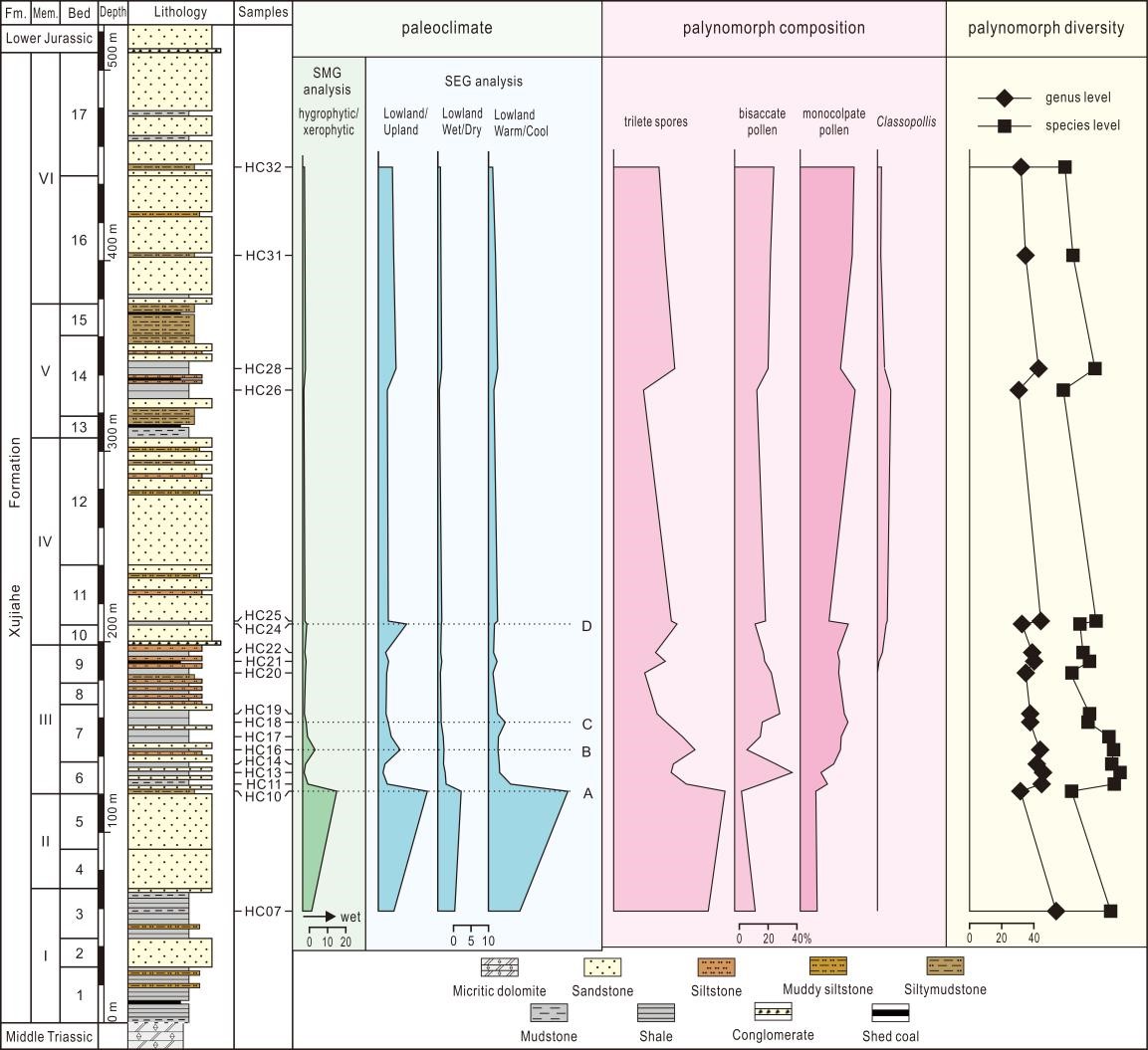
Representative fossil spores and pollen grains from the Late Triassic Xujiahe Formation in Hechuan of Sichuan Basin
The end-Triassic mass extinction (201.36±0.17 Ma) is one of the five largest Phanerozoic extinction events, and massive biotic crises occurred in both the marine and terrestrial realms. However, in East Asia, the Triassic-Jurassic terrestrial records are scarce compared with Europe and North America. In South China, the Upper Triassic strata of the Xujiahe Formation (latest Norian to Rhaetian) are well developed in the Sichuan Basin and contain diverse fossil plant assemblages, offering an ideal window to decipher the terrestrial ecosystem variations prior to the end-Triassic event.
A research team led by Prof. WANG Yongdong at Nanjing Institute of Geology and Palaeontology, Chinese Academy of Sciences (NIGPAS) has reported their recent results on the Late Triassic terrestrial ecosystem variations in the southern Sichuan Basin. Their results have been recently published online in an international geoscience journal Geological Magazine of Cambridge University Press.
This study was carried out by Dr. LI Liqin, Prof. WANG Yongdong, Prof. LIU Zhaosheng from NIGPAS and Prof. Vivi Vajda from Swedish Museum of Natural History in Sweden. They reported a detailed palynological study from the Upper Triassic Xujiahe Formation in Hechuan of Chongqing, southern Sichuan Basin.
The palynological analysis revealed a well-preserved terrestrial palynoflora of high diversity, comprising 184 species in 75 genera of spores and pollen. Three palynological assemblages were recognized, reflecting terrestrial successions throughout the entire interval with significant changes of the vegetation. Cycads/bennettites, ginkgophytes and conifers show an increasing trend into younger deposits, while ferns and lycopsids decrease in relative abundance. The Late Triassic vegetation underwent changes from lowland fern forest to a mixed forest with more canopy trees.

Palynoflora diversity and the variations of terrestrial ecosystem and palaeoclimate in the Late Triassic Xujiahe Formation from the Hechuan region, Sichuan Basin
The researchers applied the Spore-pollen Morphological Group (SMG) method and Sporomorph EcoGroup (SEG) model to interpret the palaeoclimate features. The results reveal that the lower part of the Xujiahe Formation was deposited under relatively warm and humid conditions with an overall cooling and drying trend from latest Norian to Rhaetian time, accompanied by a general decrease of ferns and simultaneous increase of gymnosperms, and a decline in diversity of miospores.
The present palynological record shows a gradual ecosystem degradation extended over the Norian–Rhaetian interval. This suggests that the cooling and drying climate from latest Norian to Rhaetian time may have caused a gradual ecosystem breakdown during latest Triassic time, and later triggered the end-Triassic biotic crisis.
This study presents new data from East Asia on variations within the terrestrial ecosystem prior to the end-Triassic extinction event; and also provides important information for understanding the changes in the vegetation preceding the end-Triassic event.
This research was funded by the Strategic Priority Research Program (B) of the Chinese Academy of Sciences; the National Natural Sciences Foundation of China; the State Key Program of Research and Development of Ministry of Science and Technology, China; the State Key Laboratory of Palaeobiology and Stratigraphy; and the Swedish Research Council and the Lund University Carbon Cycle Centre. This is a contribution to the IGCP project 632.
Article information: Liqin Li, Yongdong Wang*, Vivi Vajda, Zhaosheng Liu, 2017. Late Triassic ecosystem variations inferred by palynological records from Hechuan, southern Sichuan Basin, China. Geological Magazine. Doi: 10.1017/S0016756817000735(*corresponding author).
(Information Source: NIGPAS)

